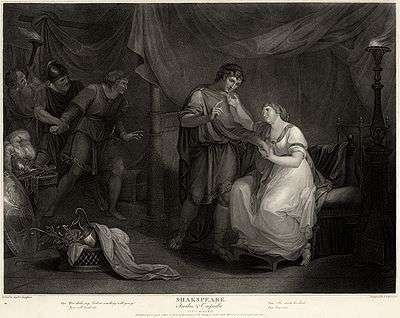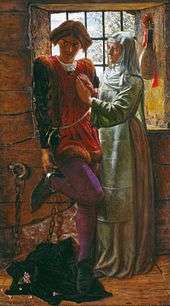Shakespearean problem play

In Shakespeare studies, the term problem plays primarily refers to three plays that William Shakespeare wrote between the late 1590s and the first years of the seventeenth century: All's Well That Ends Well, Measure for Measure and Troilus and Cressida. Shakespeare's problem plays are characterised by their complex and ambiguous tone, which shifts violently between dark, psychological drama and more straightforward comic material.
The term was coined by critic F. S. Boas in Shakespeare and his Predecessors (1896), deriving from a type of drama that was popular at the time of Boas' writing. It was most associated with the Norwegian playwright Henrik Ibsen. In these problem plays the situation faced by the protagonist is put forward by the author as a representative instance of a contemporary social problem. The term can refer to the subject matter of the play, or to a classification "problem" with the plays themselves.
Some critics include other plays, most commonly The Winter's Tale, Timon of Athens, and The Merchant of Venice.[1] The term has been variously applied to other odd plays from different points in Shakespeare's career, as the notion of a "problem play" has always been somewhat vaguely defined and is not accepted by all critics.
As conceived by Boas
Boas himself lists the first three plays and adds that "Hamlet, with its tragic close, is the connecting-link between the problem-plays and the tragedies in the stricter sense".[2] For Boas this modern form of drama provided a useful model with which to study works by Shakespeare that had previously seemed to be uneasily situated between the comic and the tragic; nominally two of the three plays identified by Boas are comedies, the third, Troilus and Cressida, is found amongst the tragedies in the First Folio, although it is not listed in the Catalogue (table of contents) of the First Folio. For Boas, Shakespeare's "problem plays" set out to explore specific moral dilemmas and social problems through their central characters. Boas writes,
Throughout these plays we move along dim untrodden paths, and at the close our feeling is neither of simple joy nor pain; we are excited, fascinated, perplexed, for the issues raised preclude a completely satisfactory outcome, even when, as in All's Well and Measure for Measure, the complications are outwardly adjusted in the fifth act. In Troilus and Cressida and Hamlet no such partial settlement of difficulties takes place, and we are left to interpret their enigmas as best we may. Dramas so singular in theme and temper cannot be strictly called comedies or tragedies. We may therefore borrow a convenient phrase from the theatre of to-day and class them together as Shakespeare's problem-plays.[2]
References
- ↑ Shakespeare’s Problem Plays
- 1 2 F. S. Boas, Shakespeare and his Predecessors, John Murray, Third Impression, 1910, pp. 344–408.
Literature
- E. M. W. Tillyard: Shakespeare's Problem Plays. Chatto and Windus, London, 1949.
External links
- Shakespeare at the British Library
.png)



